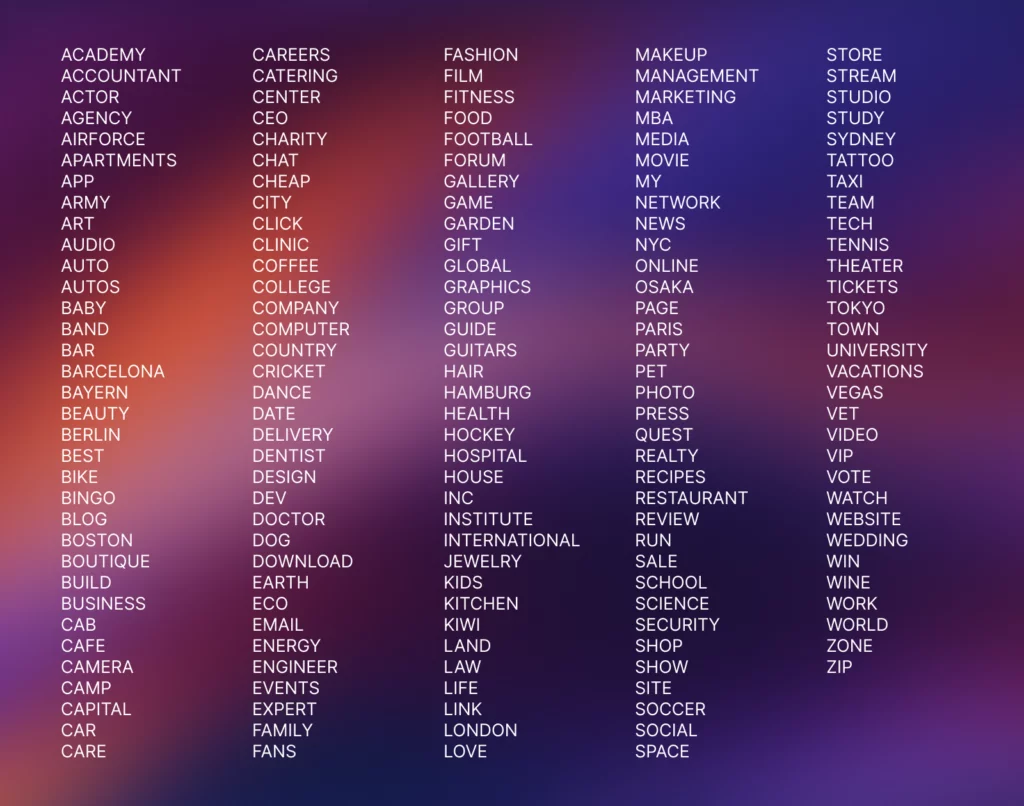Perspectives on the Next Round of New gTLDs: Joe Alagna, it.com Domains
- by Ilona K.

The next round of New generic Top Level Domains (gTLDs) is scheduled to begin in April 2026. New participants are planning their applications. We spoke to Joe Alagna, Chief Strategy Officer at it.com Domains, to find out what to expect and what domain industry trends the upcoming round may reveal.
it.com Domains: Let's start by explaining what TLDs are.
Joe Alagna: A top-level domain (TLD) is the highest level of the Internet domain name system. In simple terms, it is the part that comes after the dot in a domain name, such as .com, .net, .org, etc.
The first block of gTLDs was created in 1984. Only seven of them were generally available, including .com, .net, .org, .edu, .mil, and .gov. In 1986, about 200 country-code top-level domains (ccTLDs) were added, operated primarily for governments. Since then, there have been several other TLD launches. These include:
- .int, meant for international treaty-based organizations such as the ITU & WIPO (launched in 1988);
- seven TLDs: .aero, .biz, .coop, .info, .museum, .name, and .pro. (launched in 2000);
- eight sponsored TLDs (sTLDs) - .mobi, .tel, .post, .asia, .cat, .jobs, .travel, and .xxx (launched between 2004—2011).
Since 2012, more TLDs have been introduced. The Internet Corporation for Assigned Names and Numbers (ICANN), which governs naming on the Internet, launched the New generic top-level domain (gTLD) Program to promote the growth of the Domain Name System (DNS) and make it more versatile.
In the years since, the online community has gained access to over 500 new extensions, including .sexy (2012), .online (2015), .xyz (2014), .top (2014), .club (2014), and many more.
it.com Domains: What comes next for the New gTLD Program?
JA: The opportunity to apply for and operate your own new TLD doesn’t come along often. Until 2012, only a handful of new TLDs were added, operated through contracts with ICANN by specialized private registries who understood how the domain name system works.
However, the New gTLD Program rolled out this capability worldwide. This program aims to introduce unlimited TLDs to the root zone database, increase competition, foster innovation, and provide more options for consumers.
During the four-month window to apply between April and July 2012 over 1,900 applications were made. In the end, about 1,100 were finally approved. Today, the number of top-level domains stands at around 1,500. This fluctuates since some who applied have changed their minds, and others are held back for various reasons.

The next round, planned for 2026, will be an opportunity to apply for and, subsequently, run your own new TLD. Anyone can apply as long as they meet ICANN's requirements. This includes individuals and public or private organizations.
We can expect more extensions tailored to organizations, topics, communities, cultures, languages, and customers’ interests.
it.com Domains: How will the new round differ from previous ones?
JA: The new application round will be similar to what happened in 2012 in many ways. ICANN has been discussing improvements in “Subsequent Process (Subpro)” meetings for several years.

I believe more domain names will be offered in different languages and writing systems in the upcoming round. The last round included several non-Latin nTLDs, including those for Arabic, Chinese, or Cyrillic. For instance, Chinese TLD .移动 which means “.mobile.” However, the number of such nTLDs is still relatively low. ICANN aims to expand the range of available TLDs, including these non-Latin ones.
This expands the DNS, allowing speakers of languages that don’t use the Latin alphabet to access the Internet in their own language. It also gives global users more options for online identity, promoting competition and innovation.
ICANN fees are estimated to be around $280,000 to apply for a new TLD in this round. Other costs will also be involved, including consultancy, registry services, policy, and legal fees.
Many of the most coveted ‘strings’ (sequences of letters) have already been applied for, so this round will likely dig deeper into niche ideas and word-strings.
it.com Domains: What trends should we expect in the new round?
JA: Most likely, two trends will dominate in the next round.
First, there will likely be more geographic strings, possibly .chicago, .atlanta, or other cities and regions that were not applied for last time. Previous interest in such domains evidences this.
Back in 2007, at the ICANN International Public Meeting in San Juan, Puerto Rico, there was a workshop on geographic TLDs*. At that event, .berlin, .cat, .nyc, and .paris were among the domains presented.
In 2012, ICANN received approximately 66 geographic applications. Some cities won’t want to miss out on this round. The table below shows several that currently exist:

Secondly, we expect to see more applications from the blockchain businesses promoting Web3 domains. These companies now realize that registering their unique brand in a new gTLD can enhance their chances of success. In other words, they now see the benefits of working with ICANN.
The “D3” company, founded by industry veteran Fred Hsu, is leading this trend. They recently applied for trademarks matching their new gTLDs' names: .ape and .magic. D3 has partnered with some companies promoting NFTs and Web3 domains and plans to help these blockchain domain businesses get their own new TLD in the next round.
*A geographic TLD (geoTLD) is an informal name for a TLD that is named or related to a specific geographical, geopolitical, ethnic, linguistic, or cultural community.
it.com Domains: Will the trend for IT-related domain extensions continue?
JA: It is likely that the trend will continue into the next round of new gTLDs. The IT services market is projected to reach $1.81 trillion by 2029, driving the demand for IT-related domains. Therefore, it isn’t surprising that the trend of using IT-related domain extensions is now more popular than ever. We can see this through Afternic's keyword report, which shows that keywords like 'ai,' 'it,' and 'tech' are consistently among the top monthly choices.
I suspect many IT-related strings that weren’t taken last time will be applied for, but I don’t want to speculate or give examples because we may apply for some of our own, and I don’t want to tip off our competitors.
it.com Domains: Will the new round affect third-level domains?
JA: It will. When hundreds of new extensions come onto the market, it distracts registrars and end users. More choices can create less demand for existing products.
Domain extensions like .it.com are just beginning the journey. As our CEO, Andrey Insarov, mentioned in the article The State of the Industry 2024, third-level domains still have three to four years to establish themselves and prove their viability and appeal. The key factors for success will be the budgets involved and marketing expertise. Any new IT-related domain (top or third-level) will have to be on top of its game.
it.com Domains: What does the future look like for nTLDs?
JA: New TLDs will simply offer more choices to consumers. In the past, there were limited sensible suffixes (.com, .net, .org, .info, .biz). Now, there are hundreds of choices to the right of the dot and soon, there will be hundreds more.
Website creators will have more choices, but consumers will generally continue to trust domains that end in .com more than others. Over time, this may change as younger users enter the market. They will surely be less committed to .com domains, but old habits die hard. The .com ending (and subdomains like .it.com) will have a long, useful life span.
Keen to learn from the leading industry experts? Visit it.com Domains blog and follow us on social media.

Read also

Expert Opinion
10 Mistakes Tech Startups Make When Choosing a Domain Name, According to Experts
- 8 min read

Expert Opinion
- 5 min read
